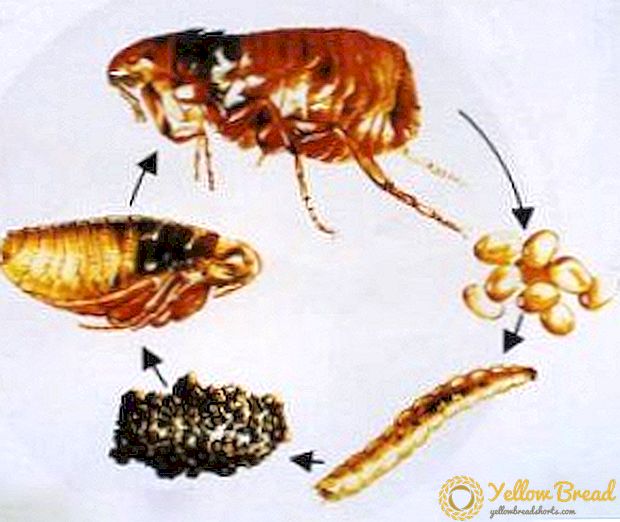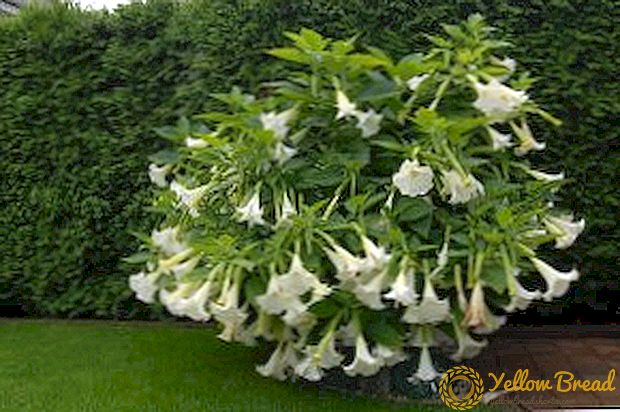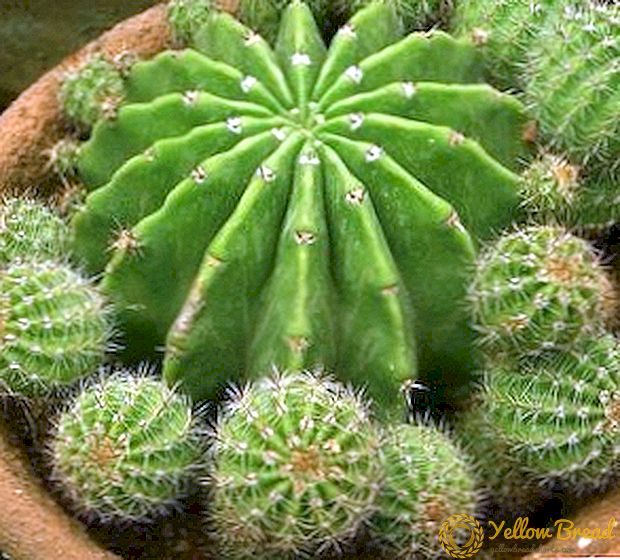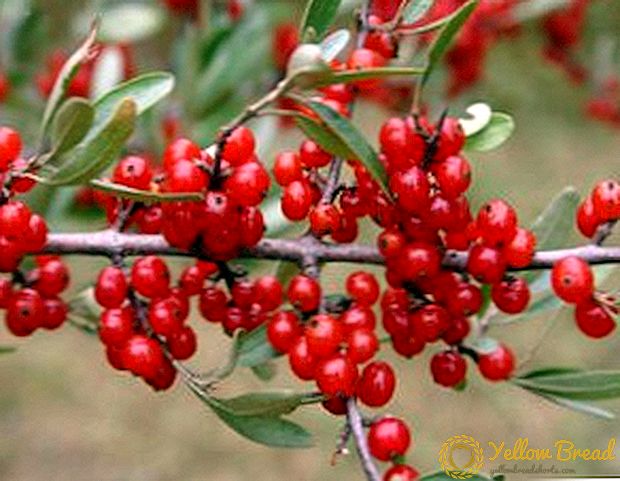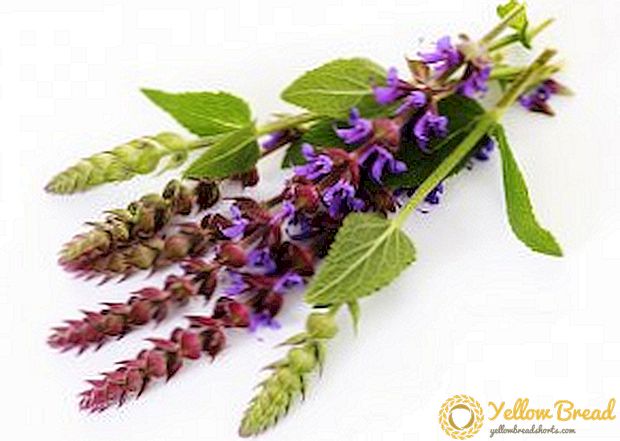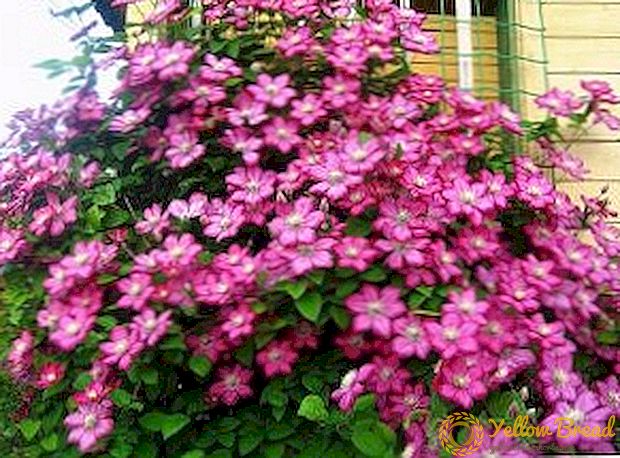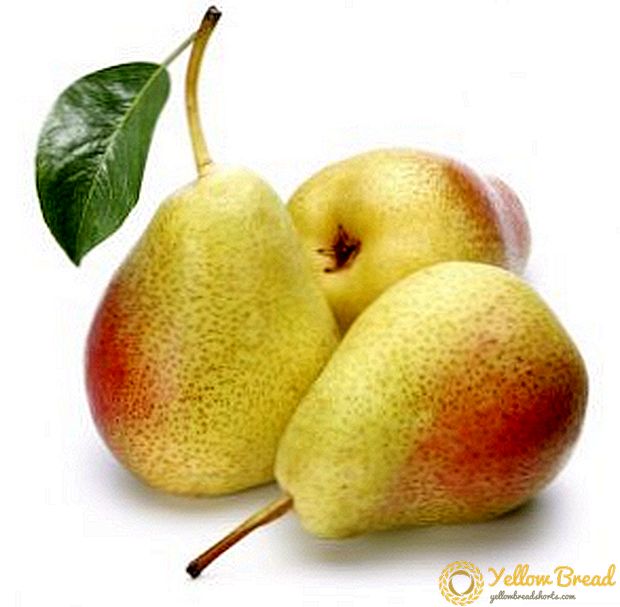
Given the cost of pear fruits on the market, many owners are looking for a good productive pear variety that will produce tasty fruits with soft pulp. Today we will discuss the pear “Dukhmyanaya”, give a brief description of the variety, and also talk about the application.
- Breeding history
- Tree description
- Fruit Description
- Lighting Requirements
- Soil requirements
- Pollination
- Fruiting
- Terms of ripening
- Yield
- Transportability and storage
- Disease and Pest Resistance
- Frost resistance
- Use of fruits
- Advantages and disadvantages
- pros
- Minuses
Breeding history
Before us is a Belarusian variety, which was obtained as a result of crossing Aleksandrovka and Klapp Favorite pears. The selection work was carried out by a team of breeders: Mikhnevich, Myalik, Putsilo and Konovalova. 
The variety was included in the State Register of Belarus in 1999.
Tree description
The tree is quite tall, up to 5 m in height. The krone is distinguished by its average density, formed in the form of a pyramid. Sheet plates are dark green, glossy, familiar shape.

Fruit Description
Pears have a standard shape, painted in a salad color with a pink side. Average weight - 130-140 g.
It is worth noting that the shape of the fruit is more oval, does not have contrasting transitions between the upper narrow and lower wide part.
Lighting Requirements
Although the pear can be planted in the penumbra, since the leaf plates are not very demanding of light, however, during the flowering and the formation of the fruit, you need a good light day and direct sunlight on the flowers and fruits. 
For this reason, it is recommended to plant a tree in an open area. It is especially important that in the first 3-4 years, the tree should receive not only a sufficient amount of fertilizer, but also have access to sunlight.
Soil requirements
For plants suitable loose well-drained substrate that does not trap moisture. At the same time, it is necessary to add a little clay to the soil, respectively, after it has been added, the ground should also be good for passing moisture.
Pollination
The variety is self-productive, so planting it "alone" on the site does not make sense - you will not receive fruit without another pollinator pear.
This information is very important, since no insects will be able to conduct pollination, if there is not a pear of another variety nearby, which can act as a pollinator.
If neighbors grow pears near your plot, then it is worth wondering if they can play the role of a pollinator.
Fruiting
Only a four-year-old tree will be able to please you with the fruits, because before that you will either receive empty flower or the ovary will fall. 
You should not make a large amount of fertilizer or water growth stimulant, because earlier than 4 years, you still can not see the fruit.
Terms of ripening
Before us is a late pear variety, so the fruits ripen closer to the end of August and the beginning of September. Up to this point pears will be very hard and tart.
Yield
The “perfumery” is valued, first of all, for its productivity, since from 1 hectare it is possible to collect about 20 tons of quality products.
Transportability and storage
The late pear is not distinguished by too soft fruits, therefore it can be transported without loss over long distances. As for storage, the fruits collected in a normal (not over-ripe) state are stored for about 3 months.
Disease and Pest Resistance
The owners who grow this variety, note a good resistance to various bacterial diseases, as well as scab. However, a variety of fungal diseases, however, is affected.
First of all, it is worth buying preparations to protect the tree from rust. A fungal disease, for which the variety does not have immunity, can quickly occupy a tree, affecting not only the leaves, but also the fruits.
You can fight rust and other fungi with Bordeaux liquid 1%, or use strong chemical agents. It is recommended to apply fungicides even if coniferous trees grow on your site. 
As for pests, the variety has no particular resistance. For this reason, try to spray the tree with folk solutions with a small lesion, or chemical mixtures - with a strong one.
Frost resistance
"Spirit" has an average frost resistance, so planting it in the northern areas is not recommended. First, the tree after winter will be in a terrible state, and you will have to constantly remove the frozen shoots. Secondly, the fruits will ripen later, which can cause frosting.
Use of fruits
It has a universal use. Fruits can be used for wine production, as the share of sugar in them is more than 9%. Also, the fruit is well suited for preservation in general.
Advantages and disadvantages
Next, we list the strengths and weaknesses of this popular Belarusian variety.
pros
- The variety has a high and regular yield, so it can be used in large farms that allow products for sale.
- It has excellent keeping quality and does not lose its shape during transportation.
- Versatility in terms of use allows the resulting crop to be used both fresh and allowed for conservation.
- There is resistance to bacterial diseases, which facilitates care.
Minuses
- The variety is self-productive, therefore it cannot be planted without other pollinator varieties.
- Average winter hardiness makes it impossible to plant a pear in the northern regions.
- The high height of the tree will not allow for high-quality pruning or fully harvesting.

You have learned about another beautiful pear variety, which, although it cannot be the first in your garden, however, has enough advantages to become quite popular. Buy seedlings only in nurseries to get a good young tree, which will not get sick and in the shortest possible time will form a developed crown.

